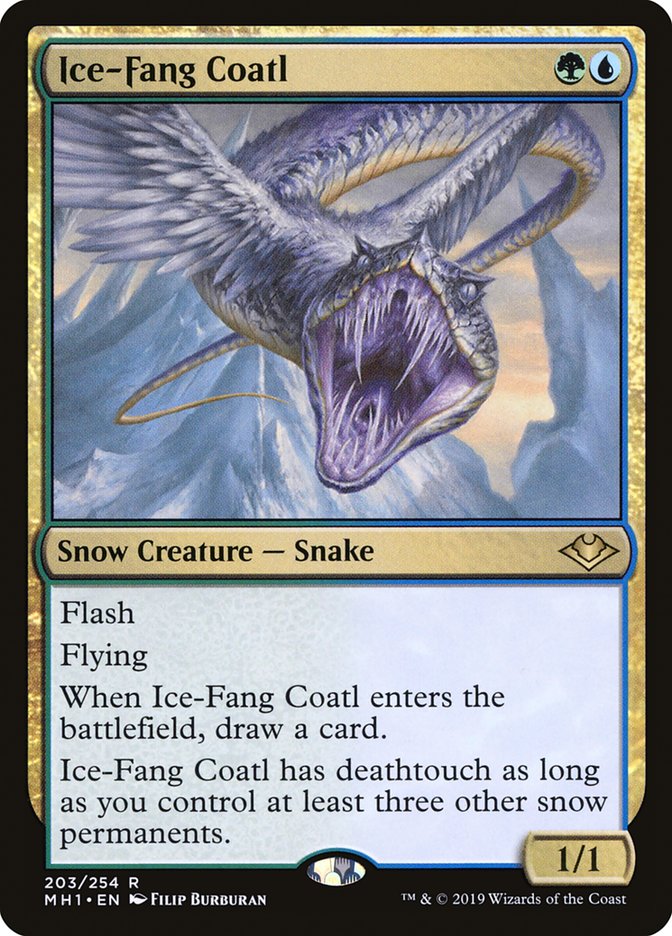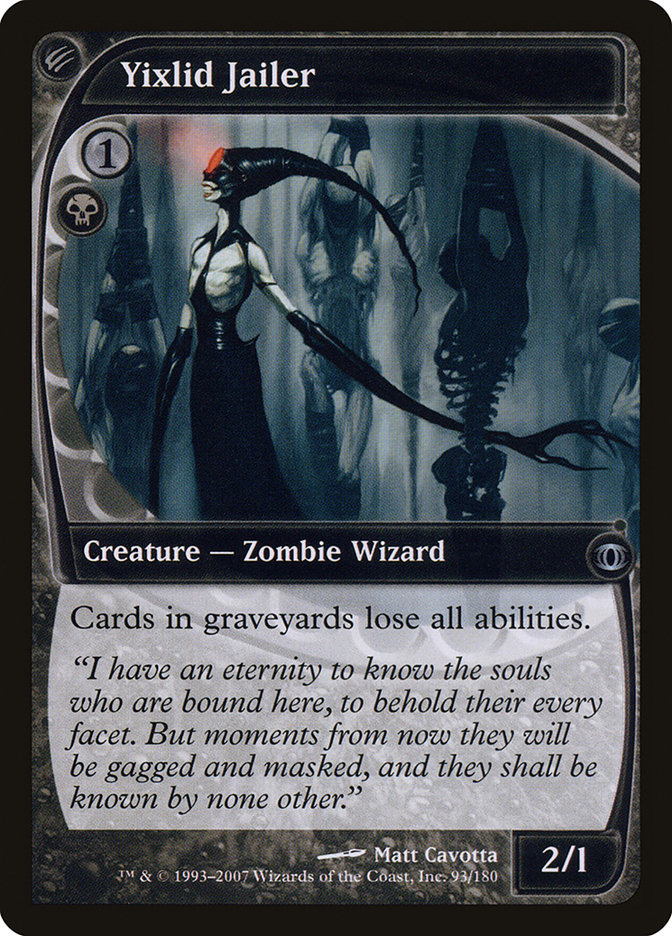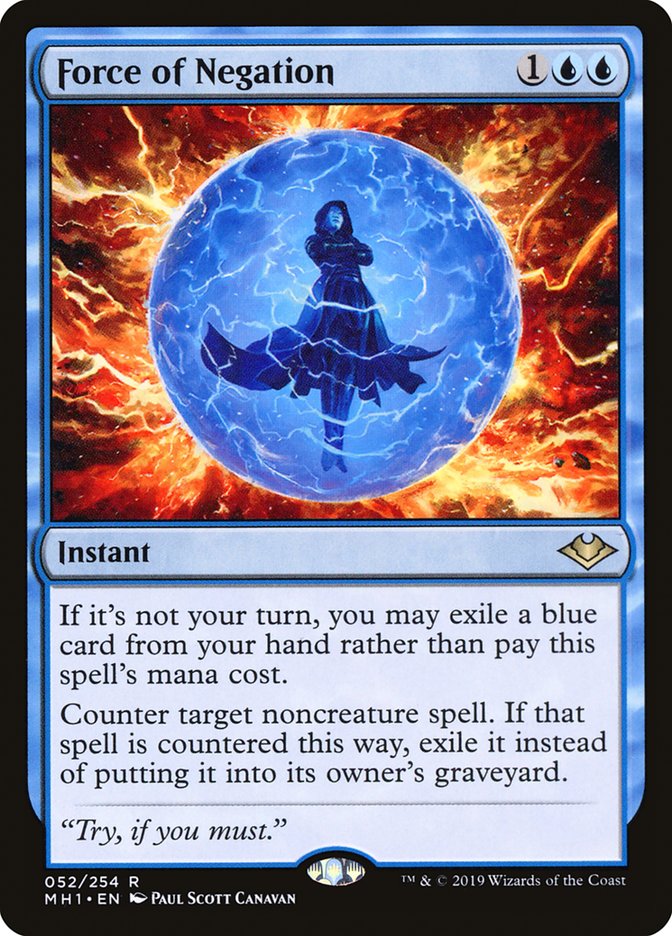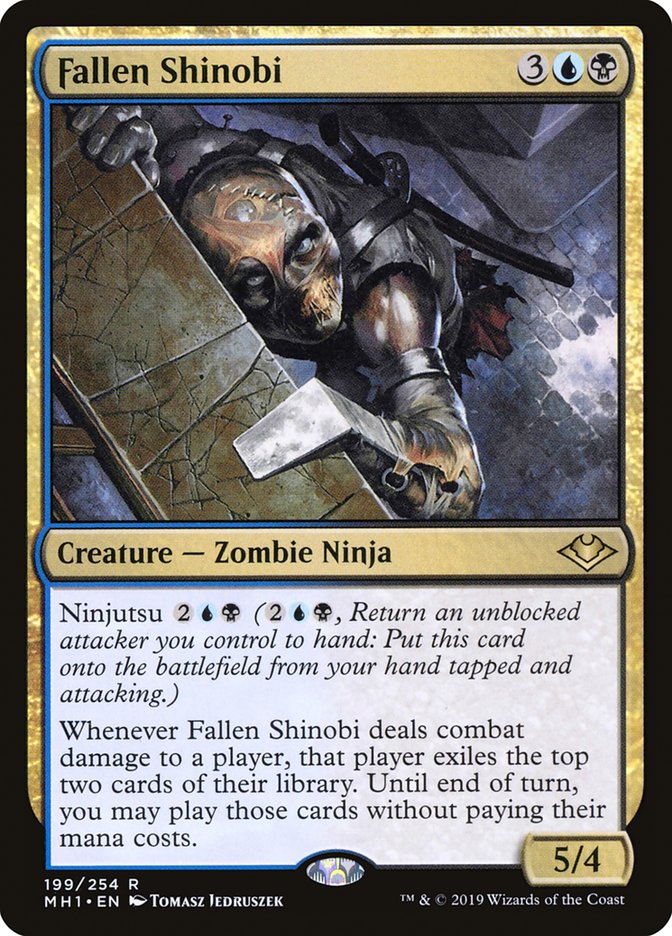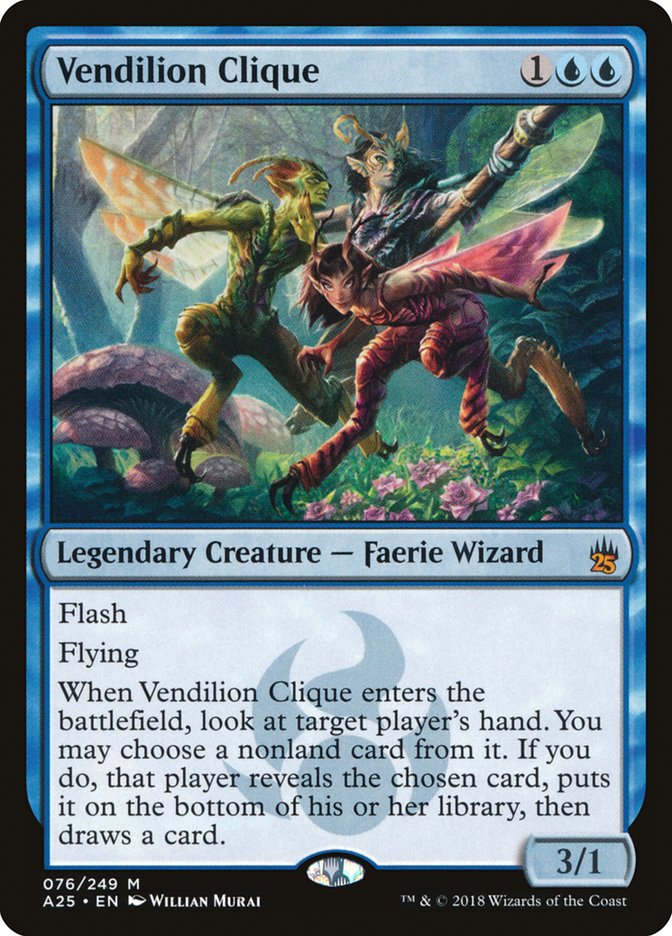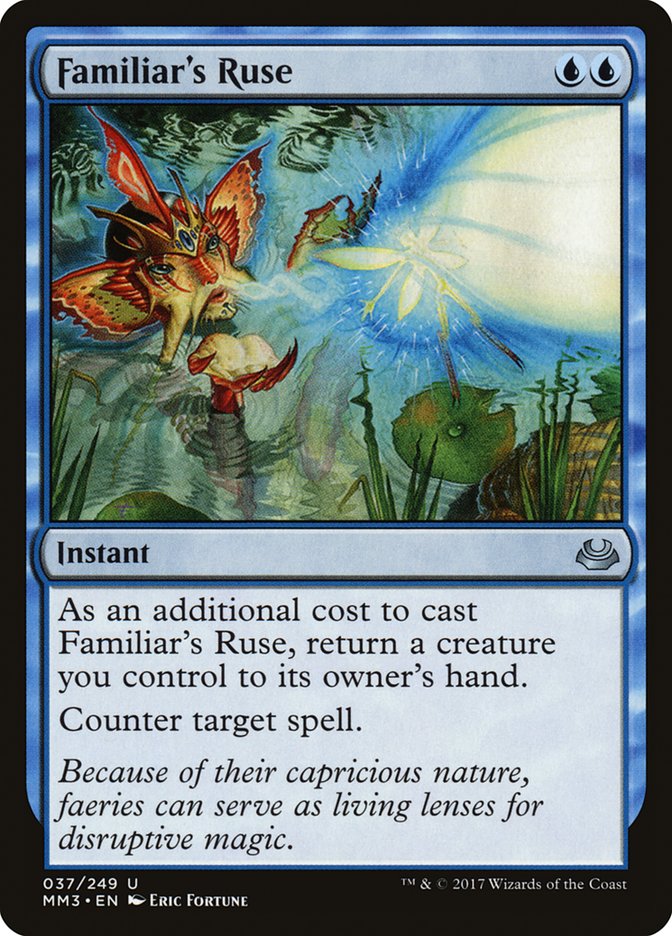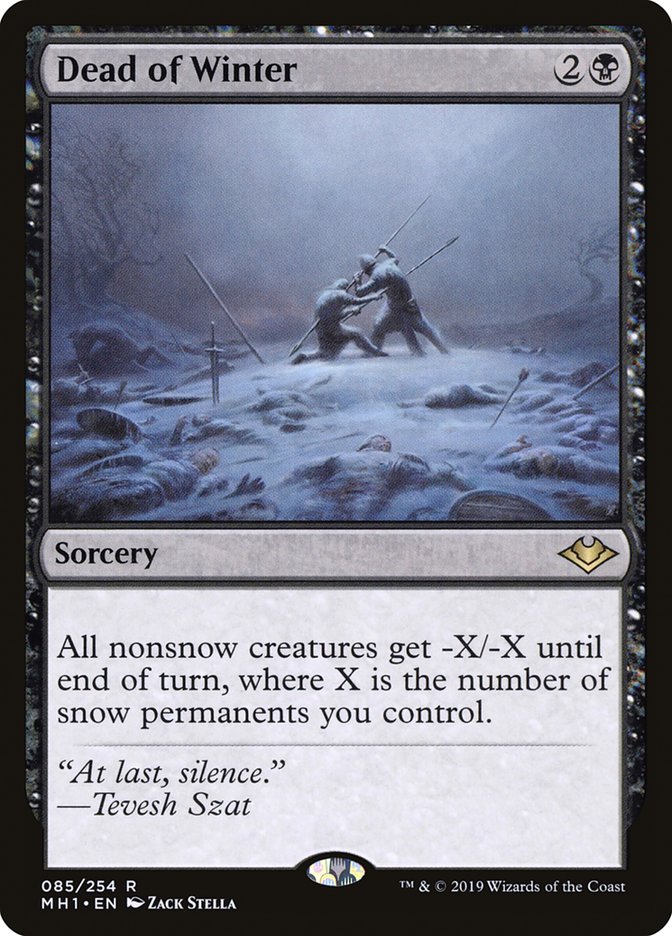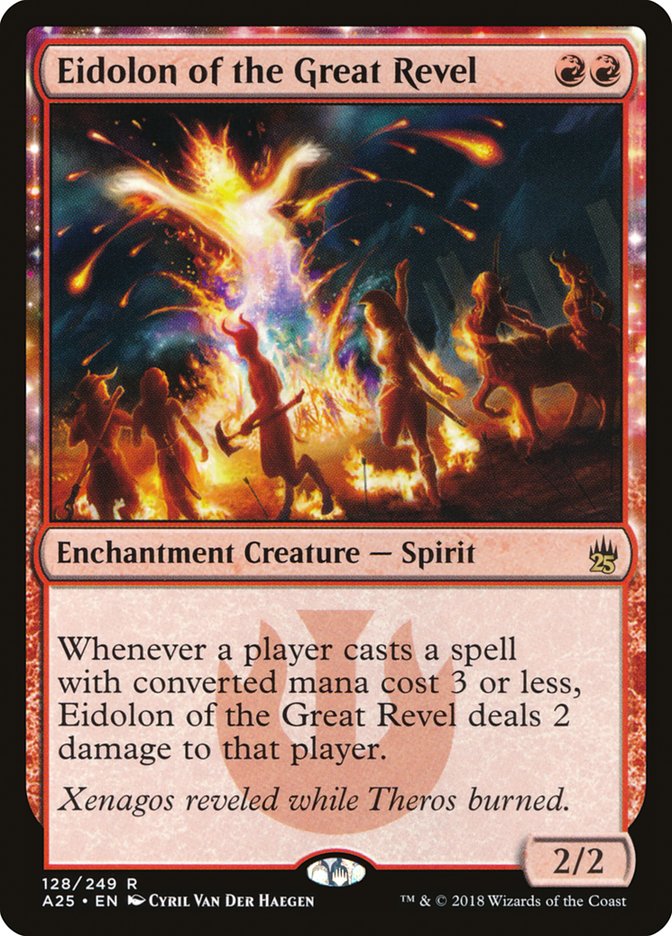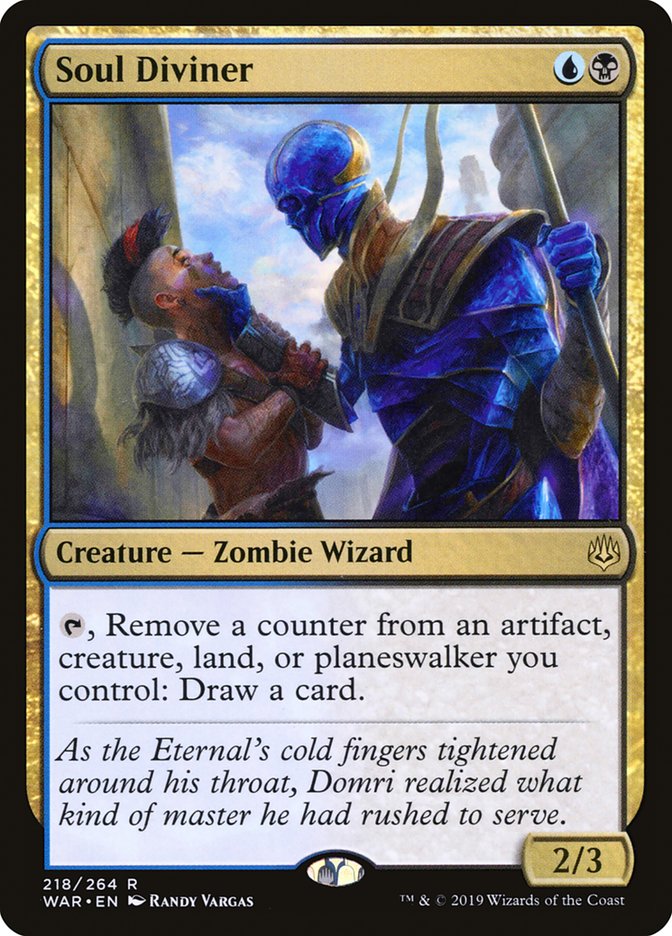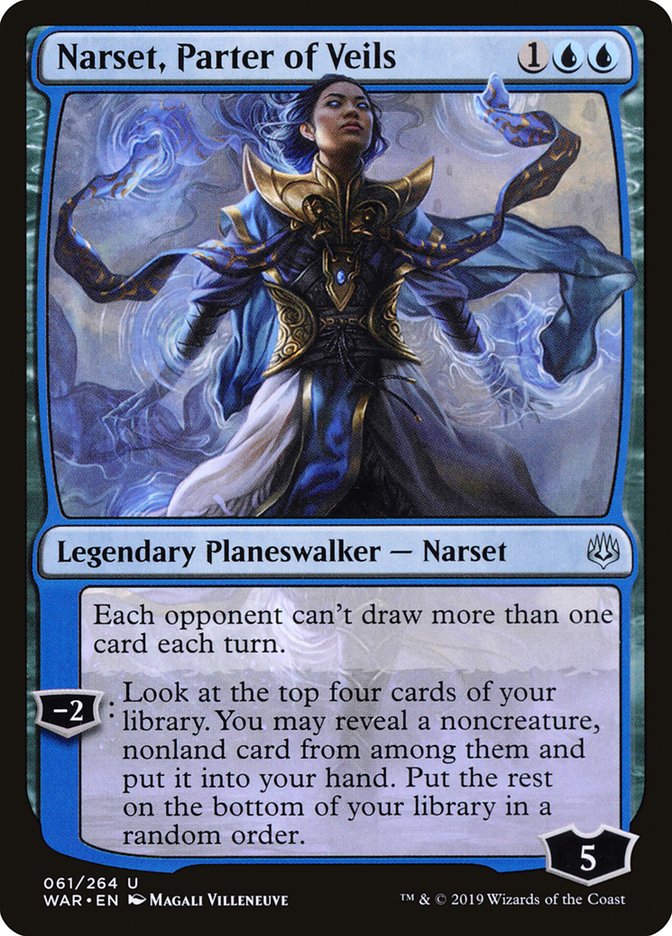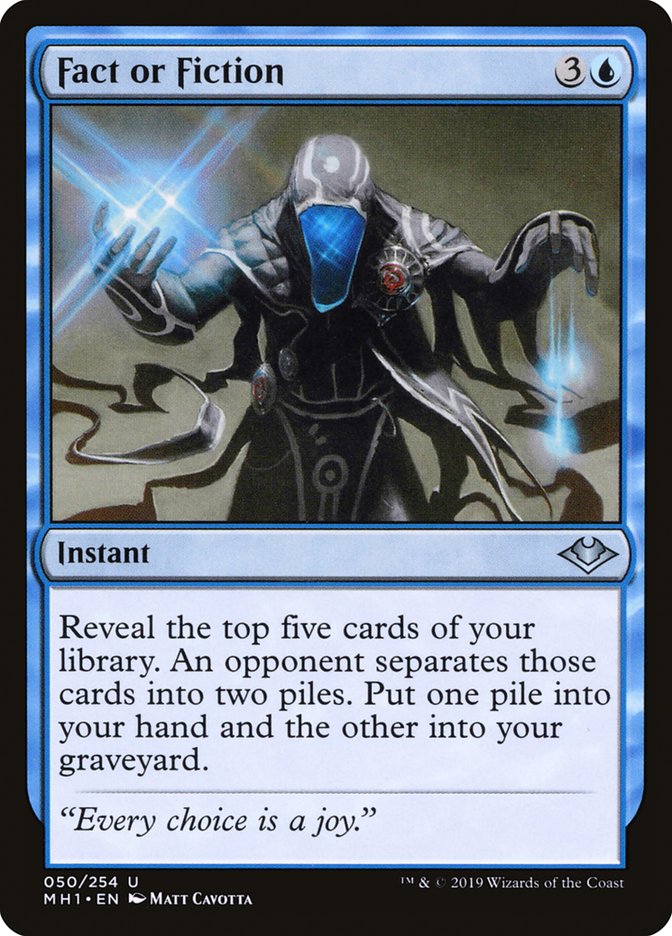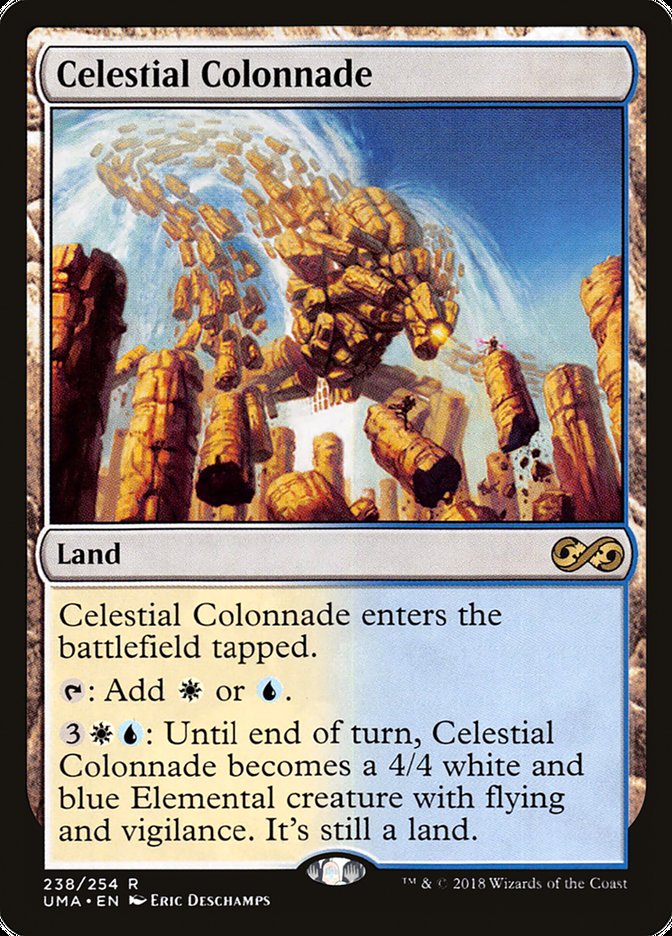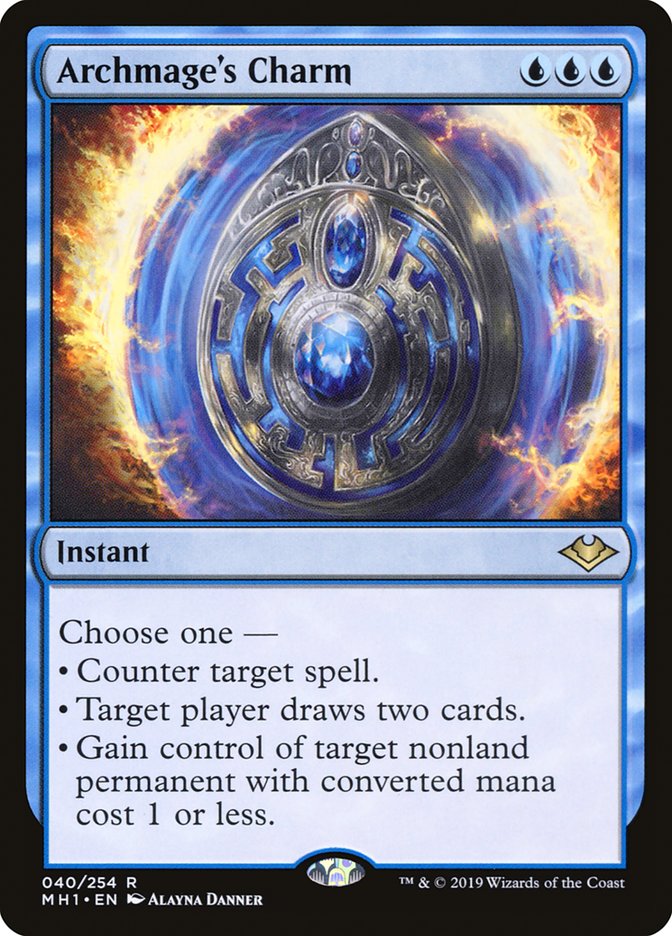This feels like a weird question to even be asking. I’ve regularly stated that the best thing to do in Modern is the unfair thing that no one’s expecting, but Modern is in a weird place right now. For those of us who haven’t really dug into Modern since before War of the Spark was legal, Modern looks strange and intimidating. Between Karn, the Great Creator; Narset, Parter of Veils; Neoform; Hogaak, Arisen Necropolis; Altar of Dementia; and whatever other crazy new stuff people are getting up to, this is the fastest Modern has ever changed.
And looking at these new Bridge from Below decks, I’m just scared that I can’t play a regular game of Magic in Modern. This is too bad, because along with these cards, there are a lot of sweet value cards that I’d like to mess around with in Constructed. It would be a real shame if Ice-Fang Coatl was just never good enough to see Constructed play in any format.
The other issue is that I don’t know if you can try to play an unfair deck no one’s expecting at the moment – everyone is expecting the best unfair decks, and they might just crush the next tier of unfair decks, so maybe playing fair is the right way to go.
Ross Merriam wrote about beating Bridgevine, and while he correctly identified problems with the current graveyard hate people use, I think he overlooked the best card against them, Yixlid Jailer.
Grafdigger’s Cage is nice, but it doesn’t shut off Bridge from Below and your opponent can dredge Shenanigans to destroy it, but with Yixlid Jailer, they have to just naturally draw one of their few creature removal spells or none of their graveyard cards function. Leyline of the Void is mostly a better Yixlid Jailer, except that they’ll typically have more answers to enchantments. If you don’t need cards in your graveyard to have text, I like a mix of the two.
I should explain my process here. I’m starting with narrow sideboard cards before I even have a direction for a deck – isn’t that backwards? For building a fair deck designed to attack a specific format, I’d argue no. The starting point is figuring out which cards will allow you to play a game; then you can figure out what you want to do in that game. I can’t worry about what I’m going to cast on Turn 4 if I can’t figure out how I’ll live until Turn 4 in the first place.
Toward that end, I think Force of Negation is another crucial card in this format. When it was previewed, I thought this would be a sideboard card for a few decks, but that’s in the old Modern. In this Modern, it looks like noncreature spells matter and you can make up throwing away a card to stop them.
If I’m going to play fair, I think I’d like to be doing it with Force of Negation, so what’s the best way to play Force of Negation? You need a lot of value to make up for going down a card. This means either several cards that trade up on resources or planeswalkers, for the most part.
For me, the idea of playing a lot of cards that trade up on resources is certainly more fun, so I’ll start there.
Creatures (16)
- 2 Vendilion Clique
- 1 Snapcaster Mage
- 3 Rogue Refiner
- 4 Ice-Fang Coatl
- 3 Fallen Shinobi
- 3 Watcher for Tomorrow
Lands (22)
Spells (22)

I’m not exactly sure where to start in explaining this deck. We start with four copies of Thoughtseize and Force of Negation to stay alive against unfair decks, and then add four cheap removal spells to compete against creature decks. This is a little light, but Ice-Fang Coatl is also very good against most creatures. From there, I want a lot of blue cards to support Force of Negation, and I’d like proactive value cards. This could be planeswalkers, but that would generally mean an end-game of protecting planeswalkers for a lot of turns, which is possible, but a lot can go wrong. I don’t think you can plan to win matches of Modern by nickel-and-diming people with Rogue Refiner (that wasn’t even enough for Standard), so I have Fallen Shinobi to put games away quickly.
I have a lot of value creatures to reliably get to a point where I can ninjutsu in Fallen Shinobi. Given all those value creatures, I wanted Aether Vial in small numbers, since drawing one lets me do a lot more, but I don’t have enough creatures in my deck to take advantage of drawing two. With all these value creatures and Aether Vial, I thought Familiar’s Ruse could be awesome, especially with Watcher for Tomorrow, and then I rounded out the deck with a couple of Kolaghan’s Commands.
The mana is fantastic, largely because Arcum’s Astrolabe makes everything very easy, but also all eleven fetchlands in the deck can fetch any color of mana, and if you have Steam Vents, Overgrown Tomb, and Island, you can cast every spell in the deck (other than Fallen Shinobi, which just needs more mana).
I believe this has the right sort of disruption to easily beat stuff like Neoform, so I don’t need to worry a lot about that in sideboarding. The fact that I have a bunch of random creatures helps pressure planeswalkers and Force of Negation is at its best against expensive sorcery-speed noncreatures, so I think I’m well-covered against Narset, Parter of Veils and Karn, the Great Creator strategies. Traditionally, running a bunch of midrange two-for-one cards has been a losing strategy against Mono-Green Tron, but Thoughtseize, Vendilion Clique, and hard counters are a good start, and connecting with Fallen Shinobi can easily win a game, so I think we don’t necessarily need that much help there.
Graveyard decks are obviously a serious concern, and I wouldn’t expect to win Game 1 against Bridgevine with this deck, but that’s the nature of graveyard decks – they’re very hard to beat in Game 1 because the ways to beat them are so narrow that they aren’t useful against many other decks, so you just can’t play them maindeck. As a result, I’m taking the matchup very seriously in the sideboard with a mix of Yixlid Jailer and Leyline of the Void, with Pithing Needle and Grafdigger’s Cage for good measure.
I originally had Negate in the sideboard, but then I realized that Primeval Titan decks would be likely to cause a problem, since Force of Negation can’t stop it. I thought about Disdainful Stroke, but most of the decks where I want extra counterspells aren’t going to stop me from having a creature on the battlefield, so I think Familiar’s Ruse is the best way to cover everything.
Dead of Winter is obviously amazing against creature decks. I think it’s just better than having extra spot removal for creatures in the sideboard, but something like Gurmag Angler could make me change my mind on that.
Tireless Tracker and Narset are generic value cards for interactive matchups. Narset’s static shines in some matchups, and Assassin’s Trophy is just a nice catch-all.
I think this deck has a reasonable plan against most decks in Modern, but one matchup in particular concerns me – I don’t think this deck is ever beating Izzet Phoenix. None of your cards line up well against anything they’re doing. I can’t think of a way to come even close to competing with them, to be honest. Surgical Extraction would be a start, and maybe Fatal Push would help, but I just don’t think it’s worth making your answers against other things worse to try to get some percentage in that matchup. This is a metagame deck to try to beat unfair decks, and Izzet’s fair game is just too good against you. I believe Izzet Phoenix won’t be popular this weekend because I think Bridgevine is very scary for it, but this deck certainly has holes.
Another one is Burn. There aren’t enough decks that are attacking your life total for me to justify making space for spells that gain life. Weather the Storm or Pulse of Murasa would go a long way here, so this matchup could be fixed if it were a concern, unlike Izzet Phoenix, but I just don’t think it’s worth it at the moment. Again, I think the format’s too unfair for Burn.
This is almost certainly bad, but here’s another way to play Force of Negation, Thoughtseize, and Fallen Shinobi:
Creatures (28)
- 4 Carrion Feeder
- 4 Gravecrawler
- 4 Diregraf Captain
- 4 Cryptbreaker
- 4 Soul Diviner
- 4 Undead Augur
- 4 Fallen Shinobi
Lands (20)
Spells (12)
Sideboard

The blue cards are a little weak. They’re not horrible, but Soul Diviner only works with Aether Vial. That said, it is really good with Aether Vial, but it’s still mostly just there to be a blue Zombie.
I’m not going to spend a lot of time discussing this deck – it’s the same basic Zombie shell I’ve written about, but it’s another deck with a lot of card advantage, and it’s technically possible, weirdly enough, for it to support Force of Negation if that’s what the format calls for.
I mentioned that the other way to support Force of Negation is with planeswalkers – I should probably acknowledge that a fast, proactive game plan that doesn’t require a lot of cards and just looks to kill your opponent before you run out also works – and Soulstrong won the Modern Challenge full of Bridgevine decks with precisely that:
Creatures (6)
Planeswalkers (7)
Lands (25)
Spells (22)

This deck has a pretty crazy number of singletons, but that makes sense given the selection capabilities of Narset, Parter of Veils and Snapcaster Mage. I also like starting with two Force of Negation early in the format. It’s possible that the full four are necessary, but even if that’s true eventually, it might take people time to realize it. Drawing multiple Force of Negations can often be pretty bad and this deck has plenty of other ways to counter spells.
Most importantly, I think this deck correctly highlights that Narset, Parter of Veils should be the signature planeswalker of planeswalker-based control decks in Modern by playing more copies of Narset than any other planeswalker.
Clearly, Soulstrong also respected graveyard strategies by backing removal that exiles with maindeck Surgical Extractions and three copies of Rest in Peace in the sideboard.
I have no idea whether Fact or Fiction is right in this deck, but I definitely respect trying one, and it’s awesome with Snapcaster Mage (more because Snapcaster gives you access to the spells you put in your graveyard than because you can cast it again), so I get playing it if you want to play the full playset of Snapcaster Mages anyway.
The other thing I really love about this deck is playing only two copies of Celestial Colonnade. I think people play four way too often and it leads to having too many tapped lands when you only really want one and you don’t need it until late in the game.
I expect this deck to evolve over time, but I also think it looks very reasonable to just pick up and play as is, and while it’s easy for its success to get overshadowed in the fear and hype around Hogaak, Azorius Narset with Force of Negation (even in small numbers) might become the deck to beat in Modern. It’s certainly a lot harder to hate than a graveyard combo deck.
The other direction I’m interested in exploring is Dimir Narset Control, because I really love playing Thoughtseize:
Creatures (12)
Planeswalkers (3)
Lands (24)
Spells (21)

This deck is kind of a hybrid of the four-color deck and the Narset control deck – value creatures and Fallen Shinobi with Narset and counterspells.
A lot of the strength of this deck is going to come down to how good Archmage’s Charm is, but aside from that, I like that this deck has Thoughtseize and Watcher for Tomorrow to get under opposing control decks in a way that gives it an advantage in the early battle to stick a planeswalker. Surgical Extraction is also a much more powerful card in a deck that has Thoughtseize, and one interesting advantage of Yixlid Jailer over Rest in Peace or Leyline of the Void is that it doesn’t blank your Surgical Extractions.
Dimir has also struggled with not having a good enough sweeper in the past, and I think Dead of Winter is a game-changer for this archetype, particularly as it only requires a single black mana, allowing it to play reasonably well with Archmage’s Charm (admittedly, you can’t have Dead of Winter for three and Archmage’s Charm available on Turn 3, but I don’t think that’s particularly important).
We’re seeing people try out a lot of crazy combo decks at the beginning of this Modern format, as there’s a lot of value to breaking it and catching people off-guard, but Force of Negation is in this set for a reason, and as weird as Modern looks, I’m starting to think we’ll still be able to play an interactive game of Magic when the dust settles.


